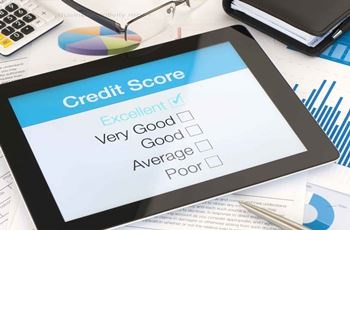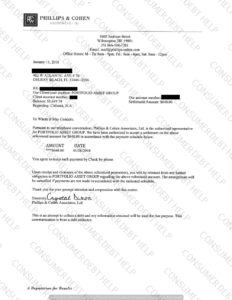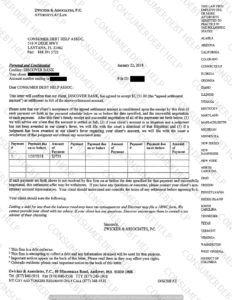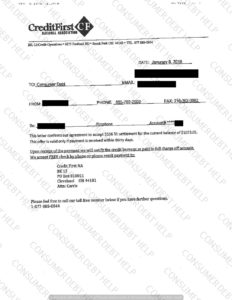I was recently looking through last year’s check registers for confirmation of a payment I had made when I noticed my handwriting on several pages looked odd. It took me a moment to realize why: at the time, my right hand was in a cast and I had been writing with my left.
I remembered how grueling that month felt. Just about everything I did was more difficult and time-consuming, and I just couldn’t wait for the day until I got my cast off. In time, my hand healed. And although it had happened just a year before, it now felt like a distant memory.
Time can help heal your credit, too. The mistakes you’ve made, or the financial troubles you’ve experienced, may be terribly painful right now. They may feel all-consuming. You may be frustrated, angry or just plain worn out. And you may feel like you’ll never have good credit again. But eventually, those memories can fade, too.
Here are three ways time can help heal your credit.
Some Information Disappears
After a certain period of time, negative information can no longer be reported. Generally, that time period is about seven years with these caveats:
- Collection accounts or charge-offs can be reported for seven years plus 180 days from the original date of delinquency (usually the date you failed to make your payment to the original creditor, resulting in the account eventually being charged off and/or sent to collections).
- Paid tax liens may be reported for seven years from the date of payment.
- Judgments may be reported for seven years or until the statute of limitations has expired, whichever is longer.
- Bankruptcies may be reported for 10 years, though the credit reporting agencies will remove completed Chapter 13 cases seven years after the filing date.
As long as the dates reported for the negative items on your credit reports are correct, you probably won’t have to do a thing to make them disappear. They will automatically be removed, and once they are, it will be as if they didn’t exist. They can no longer impact your credit scores.
In The Meantime, It’s Old News
No matter how annoying it may be to see negative information every time you get your credit reports, keep in mind that this information often has less impact on your credit scores over time.
“An awful lot of people assume that because information stays on a credit report for seven years … all that data is equally important all the way through the seven years,” says Barrett Burns, CEO Of VantageScore. But that perception is generally wrong. “As data gets older it slowly loses predictive value,” he says. In other words, it will likely have less of an impact on your scores over time.
In fact, VantageScore crunched the numbers to help illustrate the impact, over time, of various actions on credit reports. For example, a missed payment could cause a VantageScore credit score to drop by 50%, but it could recover in about a year and a half. (The impact won’t be the same for everyone, though. It will depend on the contents of their credit reports. Often someone with a higher credit score will see a larger drop when negative information appears on their reports, compared to someone with a lower score.)
In other words, that credit card payment you missed five years ago may seem like a bigger deal to you than it really is.
In 2011, FICO published estimates of how long it would take FICO credit scores to recover from mortgage-related problems and found that “In general, the higher (the) starting score, the longer it takes for the score to fully recover.”
For example, it would take an estimated nine months for a consumer with a starting FICO score of 680 to bounce back from the impact of a 30-day late mortgage payment, while it would take an estimated 2.5 years for someone with a starting FICO score of 720 to recover. Someone whose FICO score was 780 when they missed that payment could take three years to get back to where they were.
You Build Experience
One of the five major factors that make up your credit scores is the age of your accounts. Here, you get “credit” so to speak, for having experience with credit. This factor looks at the average age of all your accounts as well as the age of your oldest account. And time is your friend. The longer you’ve had your accounts, the better you can score for this factor.
There is a caveat here, too, however. If all the information on your report is negative, then when it’s no longer reported you’ll start all over again. That’s why even if you have been through bankruptcy, it can be a good idea to (cautiously) get back in the saddle again and establish a positive credit reference, even if it’s with a low-limit secured credit card. Otherwise, when your negative accounts are no longer reported, you could find yourself with little or no credit history.
How to Make Time Your Friend
Burns says that in providing data about how time affects credit scores, VantageScore wants to “give people hope that they can get back on their feet in a reasonable period of time and to give them a path to get there.” So how can you take advantage of Father Time?
- Know what you’re dealing with. Good or bad, you need to know what’s on your credit reports. Get your free annual credit reports at AnnualCreditReport.com and check dates carefully. And get your credit scores for free, which you can do on Credit.com so you can monitor your progress over time.
- Focus on what matters. An old late payment may not have the impact you think it does. Catching up on an account that you recently fell behind on, or even paying down high credit card balances, might have more positive impact on your scores.
- Apply for new credit judiciously. Remember, new accounts affect the average age of your credit history.
- Head in the right direction. Going forward, set up auto-pay or payment reminders so that you don’t miss a payment and see your scores drop again.
Christina Goethe, director of communications for FICO, sums it up this way: “Raising your FICO scores after a poor mark on your report or building credit for the first time will take patience and discipline, but it can be done. The best way to get there is for an individual to consistently pay their bills on time, to keep their overall debt as low as possible and judiciously apply for new credit.”

















